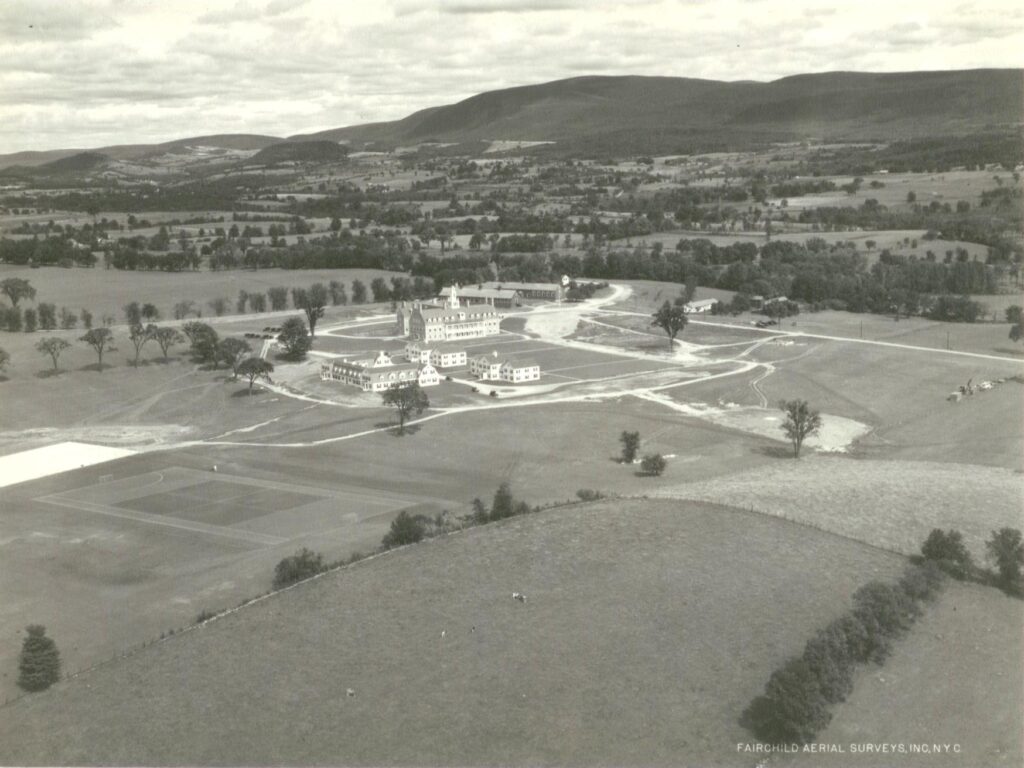This essay is a part of the Student Government series, a weekly column from Thomas Finegar.
Bennington College was founded in 1932 with the publishing of The Prospectus, penned by Robert Devore Leigh, the first president of Bennington College and notable name to this day. Leigh outlined the programs that most clearly represent the Bennington curriculum, including The Plan and the Field Work Term.
In 1932, as the college opened, a document called the Plan For Permanent Organization of The Students and Community of Bennington College was published by the student and faculty body at a whopping one and one fourth pages long. It covers, in brief language, the structure of a committee to govern the Bennington Community. It establishes conventions of student life that exist to this day including what is now called Coffee Hour and what are now called House Chairs.
The basic structure of that governing body was as follows. Each of the then five houses would elect a representative to a Student Council that would then collaborate with a comparable committee of faculty members to outline residential and academic programs and rules*. The Student Council and Faculty Council working as one would soon be referred to as the Central Committee.

From the 1930s to the 1960s, The Central Committee would change its name and exact functions but consistently delegate projects requested by the student body to various subcommittees and outside groups. This workflow would set a precedent that lasts to this day. As the student body changed and grew and more houses were added, the representatives came from different groups and began to speak for a larger array of students, but were always bound together by the process of representing student votes on various pertinent projects at the college.
Though these many changes and projects would transform the college in the following 60 years (including Student Educational Policies Committee (SEPC), House chairs, and social chairs) none were so revolutionary as what is now referred to as The Purge. During the presidency of Elizabeth Coleman (1987–2013), a complete reinvention of the college took place. While many people are aware of the widespread faculty terminations and financial restructuring, few know about the effect this and predominantly preeminent events had on student government.
As Coleman prepared for the development of her restructuring, she outlined the process that the college would go through to gather opinions from the community. This was through the creation of the Symposium program for discussion on administrative actions to address an increasing financial disaster. After the certain dissolution of governing committees, these meetings and their consensuses could not be reinforced by the power of an organized body. In the following years, this theme of opacity in action would lead to the nullification of all student government groups and projects.
After this period, the student body slowly began to create individual groups that would advocate for specific types of students (International Student Task Force, First Generation, Low-Income, or Working Class students, Student Union, Black Student Union, etc.). These groups, while effective in their own ways, do not inherently function as a whole body for the whole college.
After the appointment of Laura Walker as the new Bennington President, the student body has begun to talk at more length and in more diverse contexts about the creation of a wider student government. This government will be held accountable for transparency to the same degree that it requests of the administration and The Bennington Beacon plans to participate in that transparency.
* A document penned by Janet Summers would forever define Bennington’s relationship with ‘rules’ and its trust in the community enforcement of guidelines and trust-building.





[…] Several larger points of importance were agreed upon by most vocal attendees. Many were concerned that the administration is speaking for and making decisions on behalf of students—a model of governance strikingly different from older prototypes. […]